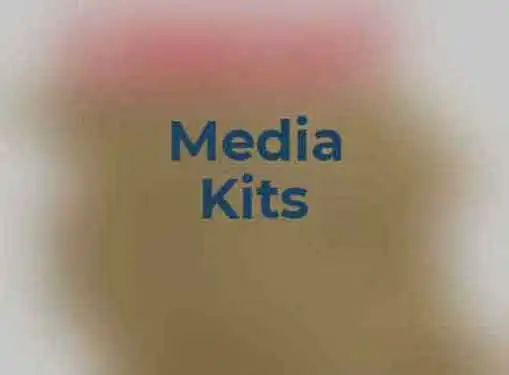Promoting a Small Business
Media Kits
Pitching yourself to the press is an invaluable skill for any small business. A good small business public relations campaign starts with a good media kit. Learn how to put together a media kit for your business today!
No small business owner in his right mind would turn away free publicity for his business, would he?

Well, if you're not using the media to get the word out about your company that's exactly what you are doing - passing up a chance to promote your business free of charge.
But attracting the media's interest doesn't just happen. To get your company on the front page, you're going to have to convince a reporter that you have something worth reading about and the tool you'll use to do that is a media kit. A media kit is a prepared, press-friendly packet of information about you, your company, and the products you offer. Although a media kit can contain a wide variety of elements, the most common elements include the following.
Cover letter
The cover letter briefly introduces the reason you are sending the media kit. Under ideal circumstances, your first contact with the reporter will already have occurred by telephone, e-mail, or in person. If so, the cover letter simply references your previous contact and tells the reporter you are enclosing the media kit she requested.
If you haven't already made contact with the reporter, the cover letter should include a pitch - an idea for an interesting and newsworthy story angle involving your business. The best way to learn about the kinds of stories that might interest a reporter is to check out other stories the reporter has written and tailor your pitch accordingly.
Fact sheet
A fact sheet provides the reporter with a quick and easy summary of your company. The fact sheet shouldn't be long (1-2 pages at most), but should tell the reporter about your company's history, size, products, employees, general statistics, and other important facts. The fact sheet should also include your contact information, making it easy for the reporter to contact you both during and after working hours.
Biographical information
Another important element of the media kit is a short biographical summary of yourself and other key personnel. Biographical information should be interesting, but factual. Remember: Your dealing with a reporter, someone who gets paid to dig up information. If you lie about your background, there's a good chance you'll regret it later.
Product list
Your product (or services) list is your opportunity to tell the reporter about what you do, what you sell, and where you sell it. The product list should be thorough, but not so thorough that it is unreadable. This is also a perfect place to tell the reporter where customers can buy your products, which after all is the reason you're creating a media kit in the first place.
Press release
Much of your media kit will stay the same from one reporter to the next. But that's not the case with the press release. The press release is a concise, one-page summary of the angle or story you are pitching to the reporter who is receiving the media kit. The trick is to craft the press release in a way that appeals to the reporter and meets her publication's story needs.
Share this article
Additional Resources for Entrepreneurs




Conversation Board
We greatly appreciate any advice you can provide on this topic. Please contribute your insights on this topic so others can benefit.